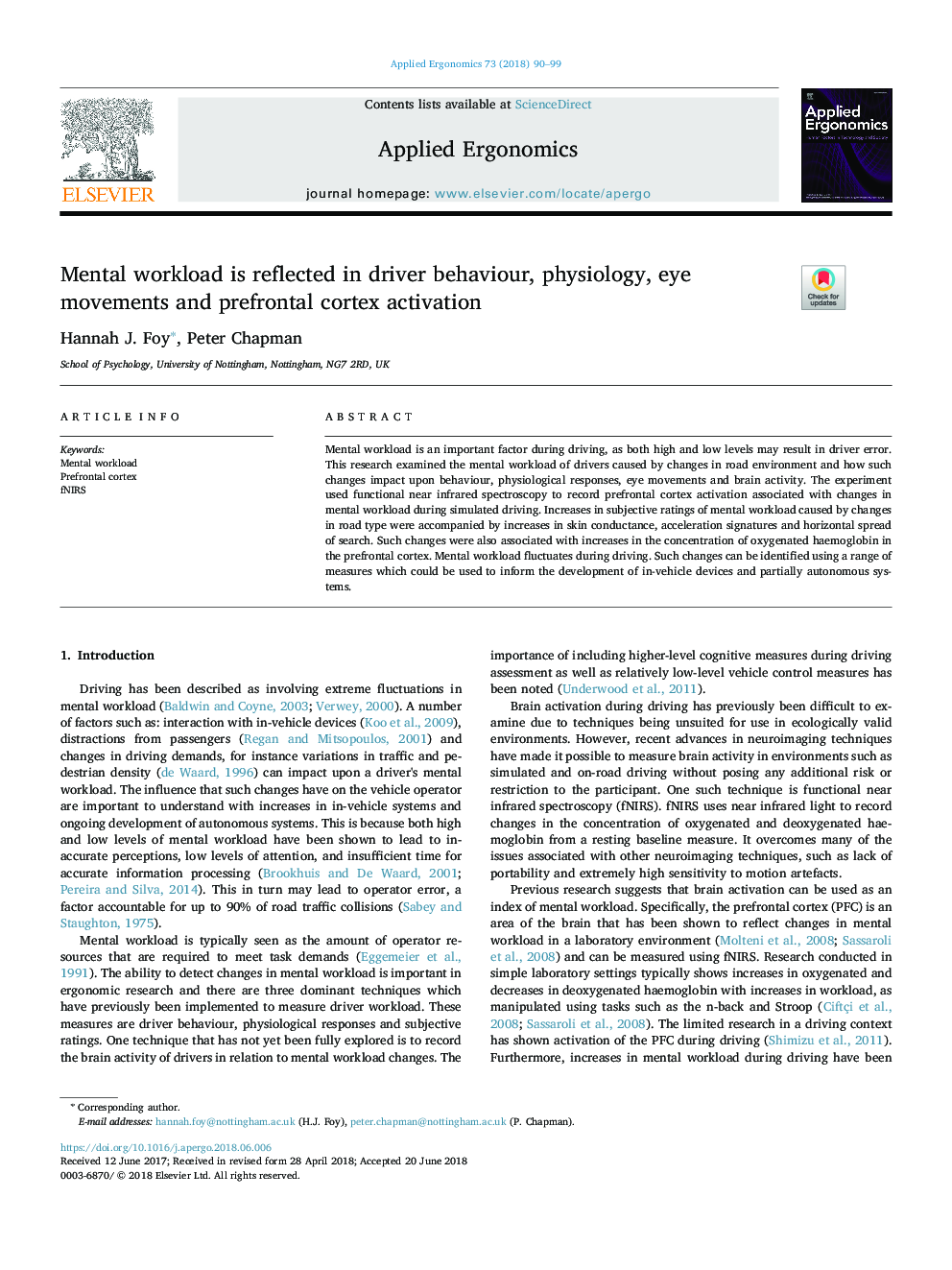| Article ID | Journal | Published Year | Pages | File Type |
|---|---|---|---|---|
| 6947543 | Applied Ergonomics | 2018 | 10 Pages |
Abstract
Mental workload is an important factor during driving, as both high and low levels may result in driver error. This research examined the mental workload of drivers caused by changes in road environment and how such changes impact upon behaviour, physiological responses, eye movements and brain activity. The experiment used functional near infrared spectroscopy to record prefrontal cortex activation associated with changes in mental workload during simulated driving. Increases in subjective ratings of mental workload caused by changes in road type were accompanied by increases in skin conductance, acceleration signatures and horizontal spread of search. Such changes were also associated with increases in the concentration of oxygenated haemoglobin in the prefrontal cortex. Mental workload fluctuates during driving. Such changes can be identified using a range of measures which could be used to inform the development of in-vehicle devices and partially autonomous systems.
Related Topics
Physical Sciences and Engineering
Computer Science
Human-Computer Interaction
Authors
Hannah J. Foy, Peter Chapman,
